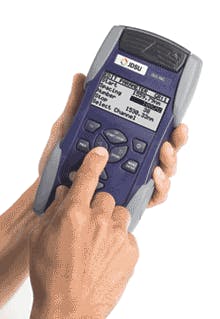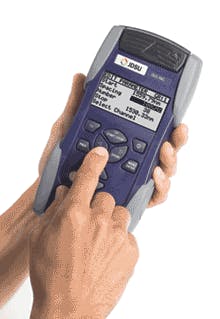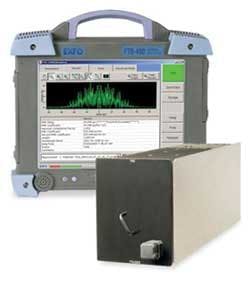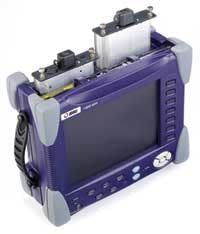by Meghan Fuller Hanna
Today's MSOs are taking advantage of access technologies like Switched Digital Video (SDV), DOCSIS 3.0, and RF over Glass (RFoG) to increase bandwidth to their subscribers and enable the delivery of new revenue–generating services. And while the deployment of these technologies has certainly altered their access network topologies, it has also led to changes within their metro and core networks. With more and more bandwidth being pushed into the metro and core, MSOs are relying on traditional telco techniques to support that bandwidth, which has precipitated the adoption of telco–like test procedures.
Where the action is
"Right now, the metro is where the action is because the MSOs are trying to increase their bandwidth and leverage fiber that has been in their networks many years," reports Nicholas Gag–non, business development manager at EXFO (www.exfo.com).
For most MSOs, their metro or citywide fiber plants represent the oldest portion of their networks, comprising 15– to 20–year–old G.652 fiber. Historically, they have fed each node with only one wavelength: 1310 nm. But many MSOs now rely on multiwavelength transmission from the hub to the node, which enables them to push more bandwidth to each node without deploying additional fiber. In the past, each node served about 1,000 subscribers. Now, an MSO can run four wavelengths to a node, for example, and split that bandwidth into four clusters of 250 subscribers per node, resulting in a fourfold increase in bandwidth.
Node splitting affects an MSO's testing needs, bringing them more in line with the traditional telcos. Depending on which portion of the optical spectrum they use—it could be the O–, C–, S–, or L–Band—MSOs require an optical spectrum analyzer (OSA) to verify the transmission of each wavelength.
Although multiwavelength transmission can occur in both the CWDM and DWDM wavelength ranges, the MSOs often opt for CWDM. As Greg Lietaert, North American product marketing manager for JDSU (www.jdsu.com), is quick to note, CWDM is considered a lower–cost alternative to DWDM; therefore, a CWDM implementation must be lower cost across the board, from system deployment through testing. Because a full–blown OSA would be cost–prohibitive in this environment, test equipment vendors have developed CWDM–specific devices that are less expensive, but portable.
Both EXFO and JDSU, for example, offer inexpensive, portable OSAs designed for use by less skilled technicians. Such devices are not able to characterize the shape of the laser beam or look at all the side bands, says Gagnon. Instead, they enable the technician to look at a few wavelengths and determine the optical signal to noise ratio (OSNR).
"[The MSOs] really want a single point solution with a go/no–go indication just to make sure the wavelengths have been transmitted from point A to point B," says Lietaert. Earlier this year, JDSU debuted its Optical Channel Checker, the OCC–55, for this purpose (see photo, p. 11).
"There are absolutely no high–performance OSA measurements," he adds. "It's just a simple tool. And it's definitely one of the major steps we are seeing in the approach of the MSOs."
Finally, the MSOs are also reserving a portion of the optical spectrum for new applications, such as commercial service delivery and cellular backhaul. The MSO will offer a single wavelength to the business subscriber or cell tower, usually carrying 1 Gbit/sec or 100 Mbits/sec. Again, says Gag–non, "this requires an OTDR and, in cases where CWDM is used, a portable OSA. So the portable OSA and OTDR are very popular tools for testing and troubleshooting the physical layer of the MSOs as they try to capitalize on these new service opportunities."
While the metro is arguably the most active portion of the MSO network, that does not mean the core network is stagnant. Tier–1 MSOs are also looking at high–speed transmission systems of 40 and even 100 Gbits/sec to increase bandwidth and reduce the cost per bit per mile, and this brings additional test challenges. Whether you're a telco or an MSO, high–speed transmission requires chromatic dispersion (CD) and polarization mode dispersion (PMD) analysis.
The fiber in the typical long–haul MSO network is only 10 to 12 years old—far newer than in the typical telco long–haul network. Nevertheless, MSOs must test their fiber for its susceptibility to CD and PMD, both of which can wreak havoc on higher–bit–rate networks.
"If [cable operators] don't have correct knowledge of their CD and PMD situation and they try to push 40–gig DWDM ROADM and soon 100–gig, they may have to overspend on very rugged transmission systems in situations where, if they had good knowledge of their CD and PMD, they could have chosen a less expensive system that is better adapted to the real situation," notes Gagnon. "A great knowledge of the real CD and PMD of the network can be a money saver."
Depending on the application, one of two tests is used to characterize the CD/PMD issues of a network. For long–distance, amplified links, dual–ended line testing is required, using a broadband source at one end of the link and a CD or PMD analyzer on the other end (see photo).
For shorter segments, say, within mesh–based metro networks, a single–ended device may be sufficient for measuring the level of CD and PMD on the line. Such test scenarios only require one technician, but they are often limited to around 120–km reach—and they can't be performed through amplifiers.
Because the typical cable–TV technician is not necessarily an expert in optical networking, the MSOs have been asking for an all–in–one device that requires minimal training of their technical staff, reports JDSU's Lietaert. "[The MSOs] need the full set of test functions, what we call the link characterization, which means loss measurement, OTDR, [and a] PMD/CD attenuation profile," he says. "They need to conduct the entire characterization test, and they want to have everything combined into one product."
Lietaert confirms that JDSU offers its T–BERD 8000 to satisfy this all–in–one requirement for high–bit–rate testing (see photo).
Meghan Fuller Hanna is senior editor at Lightwave.



